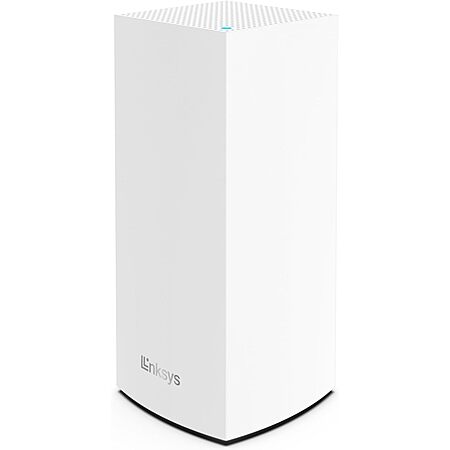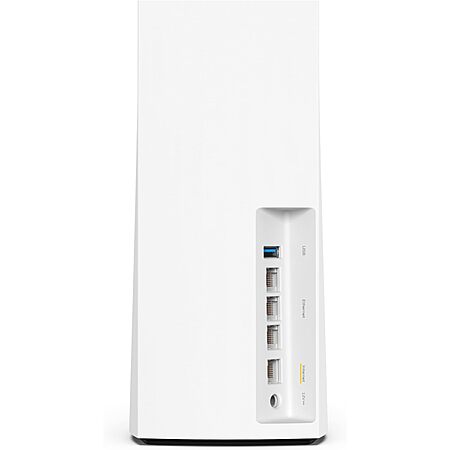Click here [dd-wrt.com] for a guide on installing DD-WRT
Download the latest DD-WRT builds from here [dd-wrt.com]
If you are not interested in using custom firmware yet, these routers support mesh with the stock firmware, but the USB port is disabled.
The stock firmware is relatively new, but is speculated to not receive many, if any, updates, so it may be best to wait until custom firmware support is merged and more mature before messing with installing custom firmware.
How to enable mesh:
- Setup your Main router completely.
- Plug your child node using the wan port to the main router lan port, wait for a solid purple light on the child node before proceeding.
- Log into your main router web admin.
- Click on CA at the bottom right.
- Click on Connectivity and CA Router setup.
- Click on both Add Wired and Add Wireless nodes buttons. Wait for the Add wireless button to re-enable.
- Click Done adding Child Nodes and then Apply.
- Now the child node light should start flashing purple and turn into a mesh mode when it turns blue.
- Disconnect Ethernet and wait for blue light again.
- Move node to desired location.
How to set up as access point:
- Disable DHCP (optional).
- Set the device to Bridge Mode under Connectivity tab.
- Connect cable from your router to a LAN port.
- Get some nail polish and a round sticker to cover the annoying flashing right light.
- Click the 'CA' at the bottom of the page to see the detailed configurations of wifi.
to unbrick and flash new firmware
run flashimg
run flashimg2
rename stock firmware to tortuga.img





Leave a Comment
Top Comments
Mind you that I only have 100Mbps Spectrum internet but I do stream/direct play 4k videos from a Plex media server to several Amazon Firestick 4k devices without issue. Overall IMO you would be hard pressed to find such relatively decent hardware for so cheap; especially a Mesh network.
It wasn't all smooth at first mind you. I kept getting disconnects; especially with the streaming IP cameras. But I discovered by disabling Express Forwarding all my streaming issues went away. (CA>Connectivity>Administration>Express Forwarding)
I'm guessing that Cisco's/Linksys' proprietary Express Forwarding routing protocol was causing havoc with the IP cams streaming capabilities. Also, disabling Node Steering seemed to make things more stable as well; mesh nodes no longer disconnect from the router when Node Steering is disabled. (CA>Wi-Fi Settings>Advanced>Node Steering)
Of course, user experience can vary so feel free to experiment. if the routers are giving you problems, try turning these features off and see if it works
It's not a deal if you never receive it.
1,239 Comments
Sign up for a Slickdeals account to remove this ad.
https://firmware-selector.openwr
https://firmware-selector.openwrt...sys_mx4300 [openwrt.org]
Is it stable enough and are there directions listed that I could follow and not break them?
Is it stable enough and are there directions listed that I could follow and not break them?
DFS support – The default firmware does not have this. DFS [howtogeek.com] can be incredibly useful in highly congested/saturated Wi-Fi areas. I find channels 64 and 128 completely free and rock-solid reliable at my location.
VLAN support – I haven't fully figured this out for myself yet, embarrassingly. I understand the concept and can create separate VLANs for IPs that are associated with their respective Ethernet ports and Wi-Fi channels. However, what I want to do is create separate networks from all the IPs once they arrive in the router's MAC/IP pool, then create VLANs from there. I'm not sure if that's possible or if such a setup is within my comprehension.
Advanced Firewall and DHCP functionality – OpenWrt is packed with enterprise-grade features, allowing fine-tuned firewall exceptions and DHCP assignments that far surpass stock firmware.
Software support – Think of this as apps [reddit.com] for your router. OpenWrt offers an impressive selection, from VPN to torrent clients. The only drawback—and it's a big one for me—is that upgrading the firmware wipes all installed software and their respective configurations, requiring everything to be reconfigured from scratch. This is such a hassle that I've stopped using additional software altogether. (Though I'm considering dedicating a single LN1301 just for software that never gets updated—not sure if that's a good idea.)
You can get USB functionality working, but it requires installing extra software, and you'll run into the same issue I mentioned earlier, where installed software gets deleted upon upgrading. Overall, DFS channel support is the primary reason I have OpenWrt installed. Everything else is nice to have but mostly unnecessary for my needs...
DFS support – The default firmware does not have this. DFS [howtogeek.com] can be incredibly useful in highly congested/saturated Wi-Fi areas. I find channels 64 and 128 completely free and rock-solid reliable at my location.
VLAN support – I haven't fully figured this out for myself yet, embarrassingly. I understand the concept and can create separate VLANs for IPs that are associated with their respective Ethernet ports and Wi-Fi channels. However, what I want to do is create separate networks from all the IPs once they arrive in the router's MAC/IP pool, then create VLANs from there. I'm not sure if that's possible or if such a setup is within my comprehension.
Advanced Firewall and DHCP functionality – OpenWrt is packed with enterprise-grade features, allowing fine-tuned firewall exceptions and DHCP assignments that far surpass stock firmware.
Software support – Think of this as apps [reddit.com] for your router. OpenWrt offers an impressive selection, from VPN to torrent clients. The only drawback—and it's a big one for me—is that upgrading the firmware wipes all installed software and their respective configurations, requiring everything to be reconfigured from scratch. This is such a hassle that I've stopped using additional software altogether. (Though I'm considering dedicating a single LN1301 just for software that never gets updated—not sure if that's a good idea.)
You can get USB functionality working, but it requires installing extra software, and you'll run into the same issue I mentioned earlier, where installed software gets deleted upon upgrading. Overall, DFS channel support is the primary reason I have OpenWrt installed. Everything else is nice to have but mostly unnecessary for my needs...
The best software I've found so far and highly recommend is luci-app-ttyd, a command-line tool for sharing the terminal over the web. Being able to run a terminal via the Luci GUI is a game changer and makes everything so much easier.
Another great tool is luci-app-nlbwmon, the Netlink Bandwidth Monitor. It's really useful for tracking which protocols and MAC addresses are using the most bandwidth on your LAN.
Lastly, Netdata [github.com] is excellent for monitoring your router's performance with a sleek GUI.
Sign up for a Slickdeals account to remove this ad.
Leave a Comment